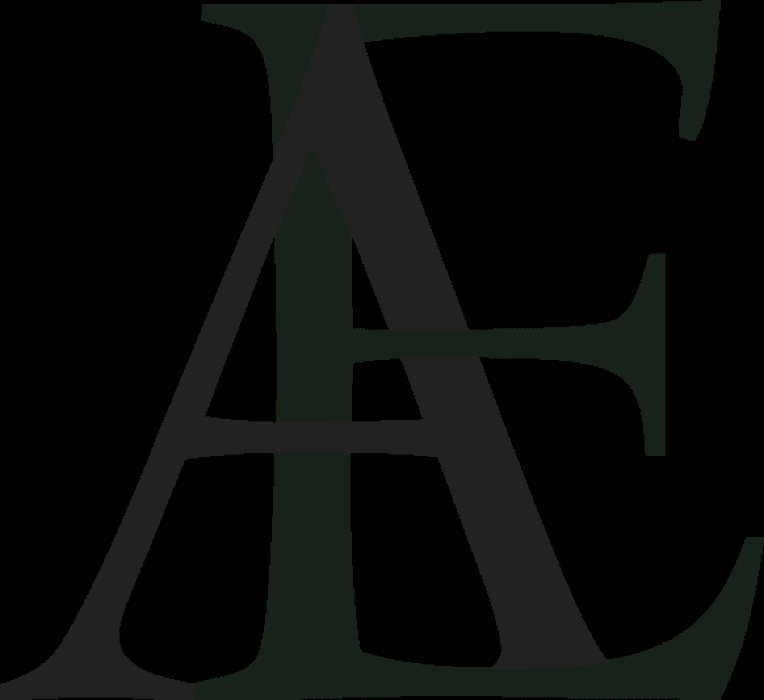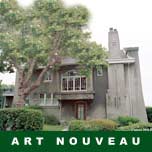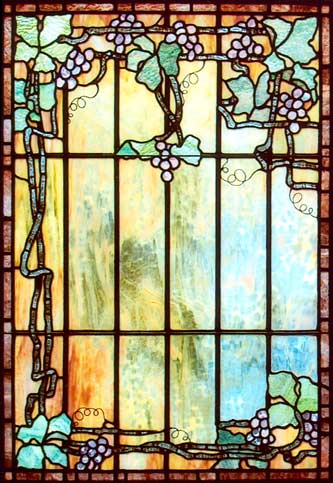
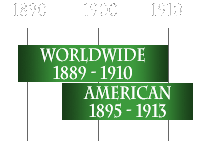
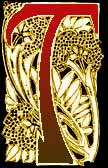
he style called Art Nouveau was short lived yet exciting. Essentially, the period extended from 1890 to 1910. All of the decorative art forms of the time, from architecture to book illustrations were challenged by this exotic movement. Art Nouveau means modern style. It developed largely in the artist-rich cities of Western Europe: Paris, Vienna, Brussels, Glasgow, London, Munich and Barcelona. The United States participated eagerly as exemplified by stained glass artists such as Louis C. Tiffany and John Lafarge of New York.
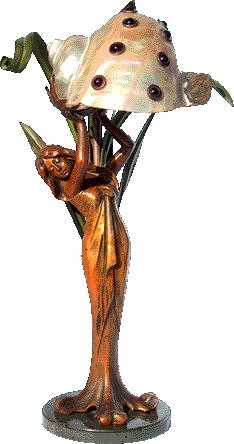
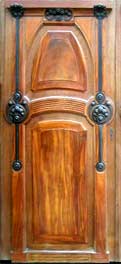 The look of Art Nouveau was shocking to the people of the day, who had been
steeped in varigated layers of Classically-based designs for many generations.
Even the Victorian aggressive design innovations were in large part based
upon age old traditional styles. This new Modern Style represented a break
with “historicism.” Art Nouveau forged a new path for the Decorative
Arts into the Twentieth Century, clearly the way for future forms of what
came to be called ‘Modern Art.’
The look of Art Nouveau was shocking to the people of the day, who had been
steeped in varigated layers of Classically-based designs for many generations.
Even the Victorian aggressive design innovations were in large part based
upon age old traditional styles. This new Modern Style represented a break
with “historicism.” Art Nouveau forged a new path for the Decorative
Arts into the Twentieth Century, clearly the way for future forms of what
came to be called ‘Modern Art.’
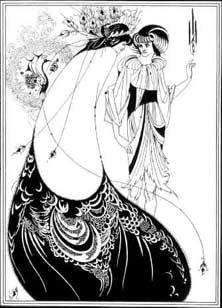 Art Nouveau artists chose their inspiration from different sources and interpreted
them in different
ways. Leaves, flowers and vines were represented as never before in art.
Sinuous and sensuous lines were twined and intertwined in complex undulating
patterns.
These lines often represented a convergence of long curls of hair,
flowing fabrics ,streams of water or overlapping vines and tendrils. The
images created could be dreamlike and ethereal.
Art Nouveau artists chose their inspiration from different sources and interpreted
them in different
ways. Leaves, flowers and vines were represented as never before in art.
Sinuous and sensuous lines were twined and intertwined in complex undulating
patterns.
These lines often represented a convergence of long curls of hair,
flowing fabrics ,streams of water or overlapping vines and tendrils. The
images created could be dreamlike and ethereal.
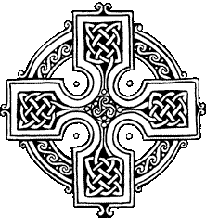
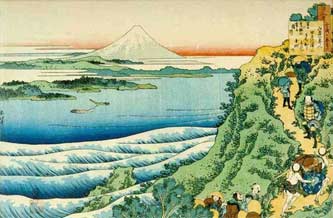 Two
of the sources, aside from nature, that designers of this period drew from are
Celtic motifs, with their seemingly-endless knot patterns, and Japanese
art, with its sinuously drawn watery landscapes. A word that can be used
to describe Art Nouveau design is “Organic.”
Two
of the sources, aside from nature, that designers of this period drew from are
Celtic motifs, with their seemingly-endless knot patterns, and Japanese
art, with its sinuously drawn watery landscapes. A word that can be used
to describe Art Nouveau design is “Organic.”
